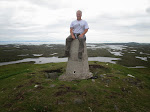Lesser White-fronted Goose – Slimbridge Wildfowl and Wetlands Trust Reserve, Slimbridge, Gloucestershire, 24th January 1988
On Sunday the 24th January, whilst on a twitch from Swanage in Dorset, where I was living whilst working at the BP Wytch Farm Project, and having seen what was probably a dodgy golden plover (as opposed to a Pacific Golden Plover) I continued on to Slimbridge Wildfowl and Wetlands Trust reserve. Now, this wasn’t just to visit another (or more accurately the very first and best) Wildfowl and Wetlands Trust reserve, I was on a mission.
Slimbridge (routinely?) had a vagrant wintering Lesser White-fronted Goose during some of most winters at this time*. So, whilst it was interesting to see Slimbridge itself (I likened it to a mature Martin Mere!) it was the goose I was after.
Having made my way to the crammed hides, I joined others working my way through the feeding flocks of (Russian) White-fronted Geese ad nauseum. This didn’t seem too promising, and it was also very annoying due to the presence of the youth wing of the movement.
However, salvation was eventually found in the form of the Lesser White-fronted Goose in front of another of the hides in the row.
Once in the hide it was just that – right in front – literally the closest bird! So (even though I had them around my feet on my way back through the collection) I got really close views, only a few hundred metres away! It was distinctly smaller than the host (Russian) White-fronted Geese, with a shorter (and as such seemingly thicker?) neck, and a high crown / forehead, noticeably shorter deep-based conical bill, with a darker head and neck, and a yellow orbital ring. As it was a first-winter bird, there was only a hint of a white ‘shield’ and no (strong) barring on the belly.
Many, many years later, courtesy of the finder, Mark Wilkinson, I saw another at Quendale, on South Mainland Shetland, in early October 2015. However, this was a somewhat plastic bird which was the offspring of wild-caught Russian birds, which had been released in Swedish Lapland on 8th July as part of the National Swedish Action Plan for the species’ recovery. Although it had clearly made it across the North Sea, it was more like to birds in the collection – it was very approachable, and as such not very credible.












